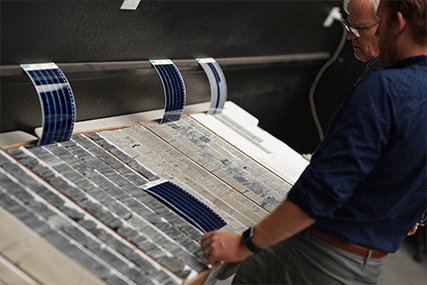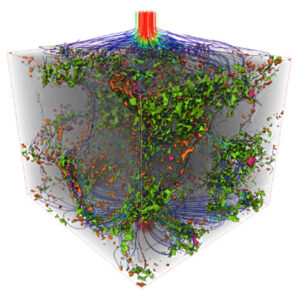CARBON CAPTURE,
UTILIZATION & STORAGE
Premier Corex is on the leading edge of Carbon Capture & Storage (CCS) efforts using our extensive experience and lab capabilities to address the complex geologic challenges facing the successful deployment of CCUS technologies.
Why Does It Matter?
Premier Corex's Response to Climate Change
We are commited to transforming the industry and being part of the clean energy transition.
-
Evolving perspectives on impact of greenhouse gas emissions - Solutions must involve all aspects of production chain for oil & gas.
-
Establishment of the PCX CCUS Taskforce, bringing together industry leaders and veterans of subsurface rock and fluid analysis to optimize workflows and deliver relevant data to CCUS projects.
-
Paris agreement signed by global leaders in 2016 is a commitment to the global community to address climate change.
-
A portfolio of technologies and approvals is needed to address the decarbonization challenge whilst supporting sustainable and competitive industries. Carbon capture utilization and storage play a critical role in this sustainable.

How Premier Corex
Can Help
Our areas of focus and advantage:
-
CO2 Sequestration – for the purpose of emission offset and direct carbon storage
-
Enhanced Oil Recovery (EOR) – using CO2 as an injection fluid to improve reservoir pressure and drive hydrocarbons to nearby production wellbores
-
Gas cycling - for seasonal energy production
-
Modelling flow in the containment strata
-
Geomechanical modelling of the wellbore/zonal isolation with complex thermal phasing
-
Ability to utilize the PCX Sample Library and Texas Tech Core Repository cuttings and core samples to help identify prospective CCUS formations
Premier Corex Service Offerings



Our CCUS Experience
-
Core analysis and petrographic studies to characterize and quantify the nature of reservoirs and overlying seal units
-
Rock mechanics/geomechanics to help understand mechanical properties of seal strength and help plan reservoir injection operations
-
Fluid analysis to characterize native formation fluids and determine their compatibility with CO2 and other injected fluids. Fluid-fluid and rock-fluid-fluid studies to investigate potential for scaling, wellbore stability, incompatibility, and mineral-fluid reactions
-
Flowrate dependency corefloods to look at the potential for fines mobilization by gaseous or dense phase (supercritical) CO2
-
Operational sequence corefloods to look at drilling/completion/recompletion/injection operations and identify opportunities to maximize injectivity
-
Simulation of thermal cycling at normal reservoir temperature conditions to understand the impact on the rock and wellbore cement when cold fluids are introduced into a warm wellbore
-
Cryogenic Scanning Electron Microscopy (SEM) to look at fluid distribution and wettability alteration.
Similar principles are used in subsurface carbon sequestration and traditional reservoir characterization
-
Understanding the petrophysical, geomechanical, and geologic properties of the injection target formation
-
Identifying the capacity of the overlying seal unit




















